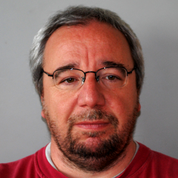Abstract
Metrology is close to a revolution. The organizations of the Metre Convention are supporting a redefinition of the International System of units (SI), the international basis of scientific, technical and everyday measurements. The 26th Conférence Générale des Poids et Mesures (CGPM, General Conference of Weights and Measures), in 2018, will make effective the redefinition worldwide.
The seven SI base units (second, metre, kilogram, ampere, kelvin, mole, candela) will be redefined by linking each unit to a corresponding fundamental constant of nature. The value of the constants will be permanently fixed to an exact value, with zero uncertainty. The practical realization of the SI units will be mostly based on quantum metrology experiments, involving both atomic and solid-state quantum phenomena.
To ensure a minimal quantitative change of the future SI units with respect to the present ones, the values of the constants will be chosen to be the best estimates of the same, as recommended by the Committee on Data for Science and Technology (CODATA).
The electrical base unit, the ampere, has in the present SI an involved and obscure mechanical definition (based on the magnetic repulsion between two infinite, straight wires), unsuitable for a practical realization. The redefinition of the ampere in the new SI takes as basis a fixed value of the fundamental constant elementary charge, paving the way for a straightforward practical realization of the unit: count a fixed number (close to 1.6E19) of electrons through a wire in the unit of time (the second).
Quantum electrical metrology experiments are not limited to single-electron counting, which can be performed with nanodevices. Superconducting integrated circuits allow the generation, via the ac Josephson effect, of voltages of quantized amplitude, directly related to the elementary charge, the Planck constant, and a drive frequency. Semiconductor devices (including graphene ones) under high magnetic field exhibit the quantum Hall effect, which gives a quantized resistance, again directly related to the elementary charge and the Planck constant.
Although at the frontier of research in solid-state quantum physics, once thoroughly investigated in research laboratory, quantum electrical metrology experiments show the potential to be exploited in commercial instrumental setups. Present metrology research efforts focus also on the realization of quantum standards suitable for continuous operation in an industrial environment (e.g., an industry calibration laboratory) and capable of performing automated calibrations of artifact standards and instruments.
EURAMET, the European Association of National Metrology Institutes, supports the research on quantum electrical metrology in the framework of the EMPIR (European Metrology Programme for Innovation and Research) with joint research projects. Several projects focused, and will certainly focus in the future, on the realization of new quantum metrology experiments towards accurate and user-friendly practical realizations of the electrical units in the forthcoming SI.
Presenter Bio
Luca Callegaro,
Istituto Nazionale di Ricerca Metrologica (INRIM)

Luca Callegaro (1967) is an Electronic Engineer (Politecnico di Milano, Italy, 1992) and holds a PhD in Physics (Politecnico di Milano, Italy, 1996). He is a permanent researcher at INRIM since 1996, and presently senior researcher. He leads the research program NM2 "Metrology of the ampere" of the Nanoscience and Materials Division of INRIM and is responsible for the Italian National Standards of electrical ac resistance, electrical inductance, electrical capacitance, and ac voltage ratio.
He is Chairman of the EURAMET Technical Committee on Electricity and Magnetism (TC-EM) and Contact Person of TC-EM for Italy. He is the Italian officer for the Commission A of the Union Radio Scientifique Internationale (URSI).
He has a habilitation as Full Professor of Electrical and Electronic Measurements, and member of the PhD Metrology Council of INRIM-Politecnico di Torino. He has been adjunct professor of Electronic Measurements at the Politecnico di Torino
He is author or co-author of more than 80 papers on international reviews (ISI), of about 150 other papers, and of the book "Electrical impedance: principles, measurement, applications", Taylor and Francis, 2013.


